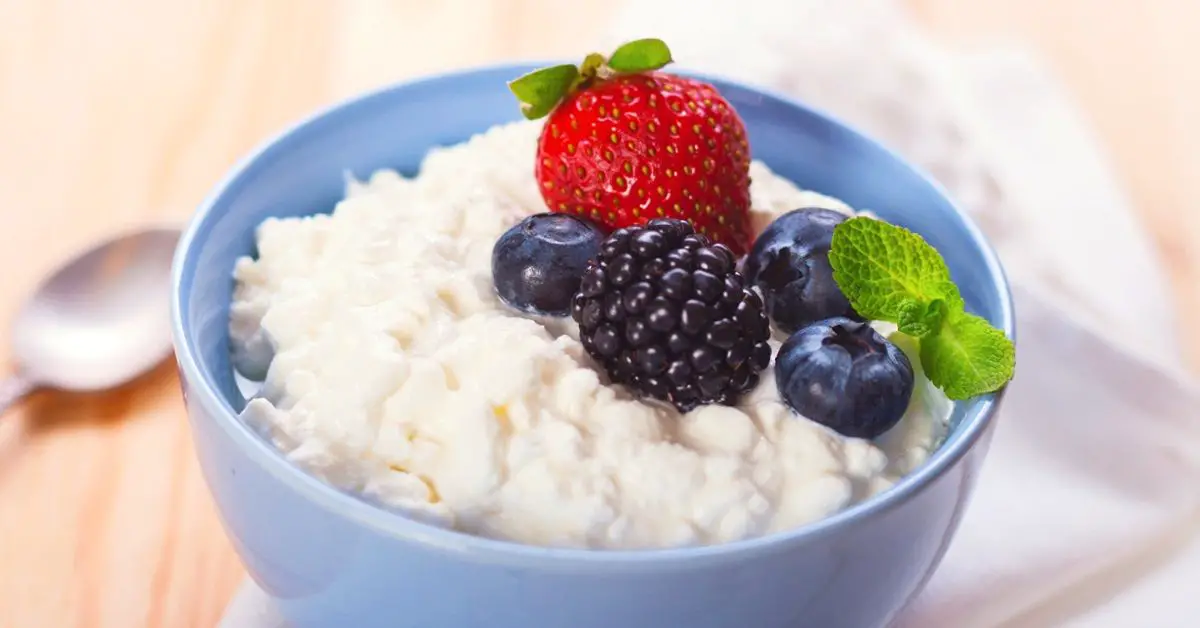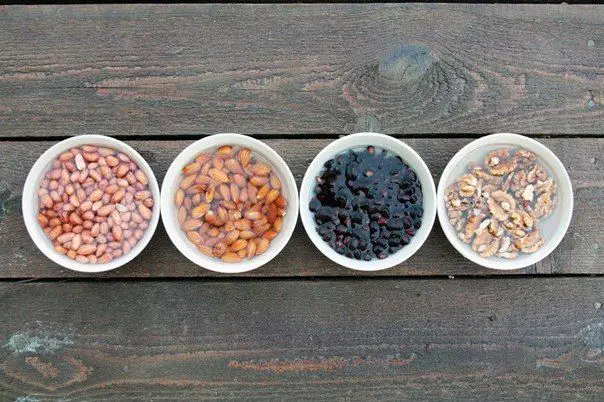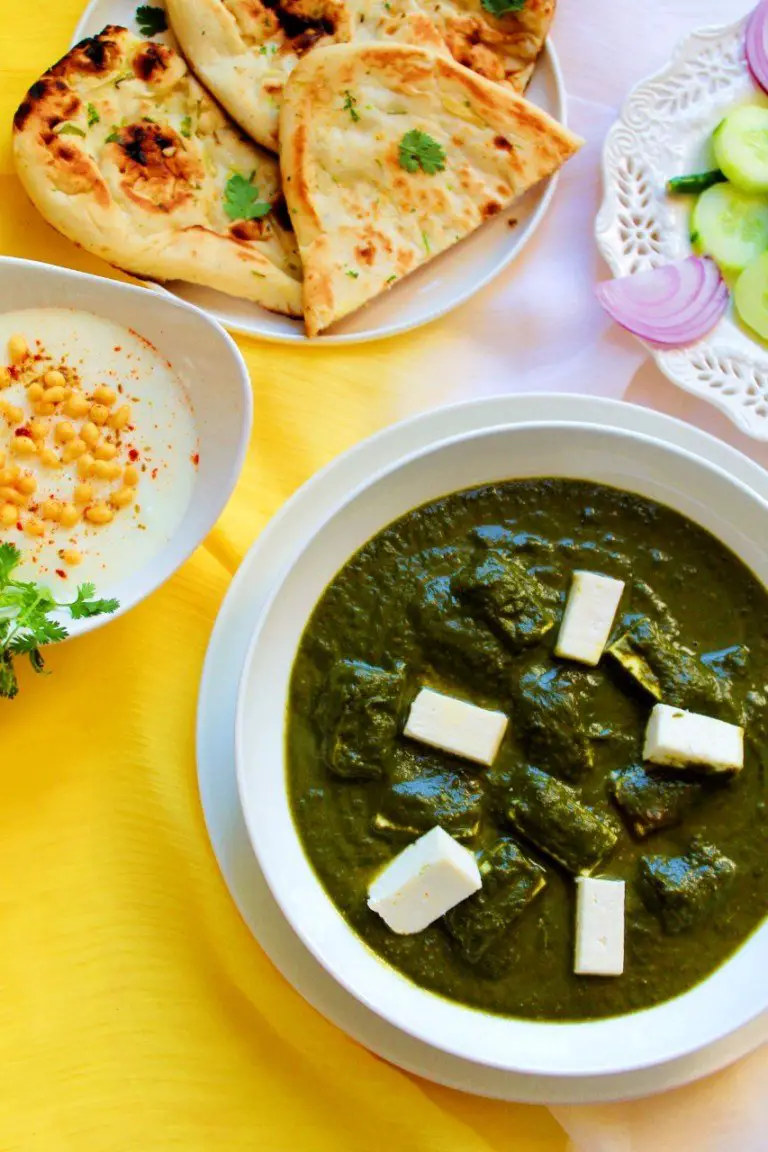Can A Person With Ckd Eat Cottage Cheese
Cottage Cheese and a Kidney-Friendly Diet Since cottage cheese is a dairy product, it is often limited in the kidney diet. This is because it is considered moderately high in potassium and high in phosphorus. When including regular-sodium cottage cheese combine it with lower sodium foods like fruit or fresh vegetables.
How Much Potassium Is In A Cup Of Low
Cottage cheese is a real power food with 28 grams of protein for a 2,000 calorie diet), 138 milligrams of calcium , 303 milligrams of phosphorus and 194 milligrams of potassium .
Which is healthier sour cream or cottage cheese?
Whats more, cottage cheese is much lower in calories and fat and higher in protein than sour cream. This cheese makes an excellent lower-fat, higher-protein substitute. In fact, one cup of cottage cheese can be blended with 4 tablespoons of milk and 2 teaspoons of lemon juice to replace sour cream in any recipe.
Which cheese is lowest in potassium?
Low potassium diets: A serving of one ounce of Swiss has about 22 mg of potassium, which fits perfectly into a low-potassium diet.
Cheese On A Renal Diet
Does cheese have a place in a CKD diet? CKD patients can still consume cheese, but it comes with a caveat. Since each CKD patient has different nutritional requirements, you need to check in with your renal dietitian to know how much and sodium, protein, potassium, phosphorus, you would need per day.
You May Like: Where Can I Buy Cashew Cheese
Cottage Cheese And A Kidney
Since cottage cheese is a dairy product, it is often limited in the kidney diet. This is because it is considered moderately high in potassium and high in phosphorus. However, it is also high in protein. A half cup provides about the same amount of protein as 2 ounces of chicken breast . It can be a great option for a high protein snack or part of breakfast.
The high sodium content is a concern. However there are low sodium or no salt added versions. If your blood pressure or fluid gains are an issue, it would be best to get the lower sodium options. When including regular-sodium cottage cheese combine it with lower sodium foods like fruit or fresh vegetables.
Why Are Calories Important

Food provides energy your child needs to grow and be active. Children with CKD tend to avoid eating because they dont feel hungry. Talk with your childs kidney specialist or dietitian to make sure your child is getting enough calories for proper growth and to fight infections.
Childrens calorie needs change depending on their age, height, and weight. Your childs health care team will determine your childs daily calorie needs, which will change as your child gets older.
To make sure your child is growing properly, his or her health care professional will compare your childs height and weight against growth charts that show the normal ranges of growth for children by age. If your child is not growing well, the health care team can suggest healthy ways to add calories to your childs diet. Feeding tubesthin, flexible tubes that carry liquid food into the stomach or small intestine are often used for infants and, occasionally, situations arise in which older children and teenagers may also benefit from them.
Recommended Reading: What To Do With Ricotta Cheese
Understanding Lab Reports And Making Healthy Food Choices For Your Child With Ckd
Your childs health care team will order regular blood tests to track your childs health. You may need to make changes to what your child eats and drinks, based on the blood test results. You may find that keeping track of test results helps you see how well your child is doing. You can ask your childs health care professional for copies of the lab reports and to explain them to you, so you can note any results out of the normal range. Learning how to read your childs lab reports will help you see how the foods your child eats can affect health.
Is Cheese High In Potassium
The National Kidney Foundation reports that milk and yogurt are high potassium foods. Accordingly, the Foundation recommends that kidney patients whose serum potassium is more than 5.0 mg/dl consume no more than one cup of milk or a 1/2 cup of yogurt a day. Since cheese is also made from milk, it is reasonable to suspect that cheese is a high potassium food as well. However, since different cheeses have different levels of potassium, the answer is a little more complex.
Video of the Day
Don’t Miss: How To Make Annie’s Mac And Cheese Better
What Protein Is Easiest On Kidneys
15 Kidney-Friendly Protein Foods for Keeping Albumin UpBurgers. Made from turkey or lean beef, both of these protein sources give you iron to help prevent anemia. Chicken. Protein from chicken can range from 14 to 28 grams. Cottage cheese. Deviled eggs. Egg omelet. Egg whites. Fish. Greek yogurt.More items
Sarah Alsing Ms Rd Csr
Sarah has been a dietitian since 2016 working in acute care, including transplant, and currently works in dialysis with in-center and peritoneal dialysis patients. She loves staying up-to-date on the latest nutrition research and discussing it with her patients. Sarah also has a passion for fitness and cooking healthy meals, as well as baking sweet treats for family and friends.
Don’t Miss: Can You Eat Melted Cheese With Braces
Dairy And Our Kidneys
When it comes to dairy products in our everyday food intake, most people would say that they have milk or other dairy products daily, if not more! Milk, cheese, cottage cheese, yogurts, pudding and ice cream are some of the favorite dairy products of young and old alike. Dairy products are naturally abundant in protein, B vitamins, calcium, phosphorus and potassium. All of these nutrients are important for our bodys many functions.
Healthy kidneys help remove waste products and extra fluid from the blood and help balance the levels of salt and minerals in the body. As kidney function declines, protein waste products, fluid, salt and minerals can rise to unsafe levels in the body and this may mean that dairy products must be limited.
A closer look at these key nutrients in dairy foods will help those with decreased kidney function understand the importance of limiting dairy foods.
Things To Do Before Creating Your Kidney
You May Like: Can You Make Mac And Cheese With Almond Milk
Why Are Clinical Trials With Children Important
Children respond to medicines and treatments differently than adults. The way to get the best treatments for children is through research designed specifically for them.
We have already made great strides in improving children’s health outcomes through clinical trialsand other types of clinical studies. Vaccines, treatments for children with cancer, and interventions for premature babies are just a few examples of how this targeted research can help. However, we still have many questions to answer and more children waiting to benefit.
The data gathered from trials and studies involving children help doctors and researchers
- find the best dose of medicines for children
- find treatments for conditions that only affect children
- treat conditions that behave differently in children than in adults
- understand the differences in children as they grow
Watch a video of NIDDK Director Dr. Griffin P. Rodgers explaining the importance of participating in clinical trials.
Absorption Of Phosphorus In Cheese

Our bodies absorb phosphorus differently from different foods. Our bodies absorb very little phosphorus from plant foods such as whole grains, beans and nuts. On the other end of the spectrum, we absorb about 90% of phosphorus from meat, poultry and fish.
In terms of phosphorus absorption, dairy and cheese are closer to meat. We absorb about 80% of the phosphorus in cheese. Because of this, cheese can contribute a large phosphorus load if you are not careful.
Read Also: Where Can I Buy Cheese Curds
How To Create A Meal Plan
From Kidney Kitchen Pro, click Create a meal plan. From here, take the following steps:
- Meal plan name: Give your custom meal plan a name so you remember who or what it is for. Make sure your meal plan is descriptive as youll have the ability to add the custom meal plans to toolkits that you can access later or share directly with others.
- Select recipes or food: For each meal/snack each day, you can add a Kidney Kitchen recipe from the dropdown menus. If you are not familiar with the recipes, you can learn more about each recipe Find recipes from the Kidney Kitchen Pro dashboard. You can add a recipe to an existing meal plan by clicking Add to meal plan to add them to a specific meal plan.
- If you plan on sending this meal plan to another person, you can add a special note in this section.
- Private notes: If you want to note something that should only be visible to you, this is where you add it.
Once youve created your meal plan, click Create meal plan to save it. If you are logged in to Kidney Kitchen Pro, you can access your custom meal plans at any time. Click on the meal plan to access the content and to share and print it for others.
Can I Still Eat Out If I Have Kidney Disease
Yes. Eating out is an enjoyable activity and is an important part of many family and social occasions. Having kidney disease does not mean you have to stop doing things you enjoy like having a meal out or ordering a takeaway.
Eating out is a special occasion and you may wish to relax your diet during this time. Some of the foods included in the better choices sections below should be reserved for a special occasion and may not be suitable to include as part of your everyday diet. Please ask your dietitian, doctor or nurse for specific advice.
You May Like: When Chuck E Cheese Close
Foods Low In Phosphorus For People With Kidney Disease
Phosphorus is an essential mineral that makes up around 1% of a person’s body weight, most of which is in bones and teeth.
People with chronic kidney disease typically have to restrict and monitor their intake of phosphorus. Most refined oils, fruits, vegetables, and refined grains are low in phosphorus. People should avoid eating meat, which typically contain more easily absorbed phosphorus than found in plants. Since meats are restricted in a CKD diet, egg whites can be a good low-phosphorus source of protein. Soymilk may also work.
The National Kidney Foundation cautions people with CKD to avoid preservatives and additives which use phosphorus. Phosphorus is added to a lot of foods, check ingredient labels for anything with the letters PHOS that includes:
- Dicalcium phosphate
- Sodium tripolyphosphate
- Tetrasodium pyrophosphate
The list below is a sample of foods low in phosphorus that are also low in other minerals typically restricted on a CKD diet.
Cheese In A Kidney Disease Diet: What Cheese Maybe Ok On A Renal Diet
Americans and many people across the world literally love cheese. Its an all-time favorite food and consumption data published by USDA unfolded many surprises. From 1977 to 2017, Americans increased the amount of cheese every person ate each year from 16 lbs to 37 lbs. At a 21 lbs increase per person, cheese is undoubtedly one of the favorite foods in America.
Its the endorphins released by the cheese which brings out the fattiness mimicking an umami effect. Cheese also triggers dopamine production so dont ask yourself why you always want more cheese.
Now, for someone living with kidney disease, cheese must be avoided or limited. Its the high sodium content and phosphorus content that you want to stay away from. Some cheeses even have high amounts of protein in them. For those following a vegan diet, you should avoid cheese at all times.
However, for those who just simply cant resist not having cheese in their diet, even if its a renal diet, Robert has put together a list of safe cheeses one can eat with kidney disease. This list is usually lower in phosphorus and tends to be lower in sodium. Even if you include cheese in your renal diet, you must enjoy it in small portions.
Here are the cheeses you can include in a renal diet:
- Brie cheese
Read Also: How You Make Homemade Macaroni And Cheese
What Dissolves Kidney Stones Fast
Your doctor can determine whether a juice may cause side effects for you or your baby.Water. When passing a stone, upping your water intake can help speed up the process. Lemon juice. Basil juice. Apple cider vinegar. Celery juice. Pomegranate juice. Kidney bean broth. Dandelion root juice.More items
Cottage Cheese Side Effects
Many dieters turn to cottage cheese for weight loss, pairing it with fruits such as melons, berries and pineapple. This dairy food is high in calcium and other nutrients, but there are side effects to eating cottage cheese. It can cause various reactions, and its protein and sodium content may trigger health problems.
Also Check: How Much Does Cheese Cost
Antioxidants May Help You
Every cell in your body needs oxygen. But, too much oxygen in the wrong places can oxidize and cause damage, a lot like rust. Antioxidants help protect your cells, and may help your kidneys. Ask your doctor if antioxidants like these. might be worth taking:
Fish oil can help slow CKD that is caused by a disease called IgA nephropathy.
Note: Talk to your care team before you take any supplement, vitamin, or over the counter remedy. When your kidneys don’t work well, these can build up in your body to levels that could harm you.
What About Alcohol And Soft Drinks

Drinking alcohol in moderation is generally safe, even if you have CKD. If you have been advised to limit your fluid intake, alcohol must be counted within your prescribed fluid allowance.
If you have diabetes and CKD, alcohol may be safe to drink if you have your blood sugar level under control.
Always check with your doctor or renal dietitian to make sure it is safe for you to drink alcohol. It is recommended any alcohol you do have is drunk with food.
Also Check: How To Make Mozzarella Cheese Sticks
What Clinical Studies For Ckd Are Available For Child Participants
You can view a filtered list of clinical studies on CKD in children that are federally funded, open, and recruiting at www.ClinicalTrials.gov. You can expand or narrow the list to include clinical studies from industry, universities, and individuals however, the National Institutes of Health does not review these studies and cannot ensure they are safe. If you find a trial you think may be right for your child, talk to your childs doctor about how to enroll.
What Foods Can I Include
Your dietitian will tell you how many servings you can have from each of the food groups below. The approximate amount of these nutrients is listed next to each food group. Read the food label to find the exact amount.
- Bread, cereal, and grains: These foods contain about 80 calories, 2 grams of protein, 150 mg of sodium, 50 mg of potassium, and 30 mg of phosphorus.
- 1 slice of bread , small dinner roll, or 6-inch tortilla
- ½ of a hamburger bun, hot dog bun, or English muffin or ¼ of a bagel
- 1 cup of unsweetened cereal or ½ cup of cooked cereal, such as cream of wheat
- cup of cooked pasta or rice
- 4 unsalted crackers or 3 squares of graham crackers
- 3 cups of air-popped, unsalted popcorn
- ¾ ounce of unsalted pretzels
You May Like: How To Make Better Mac And Cheese
